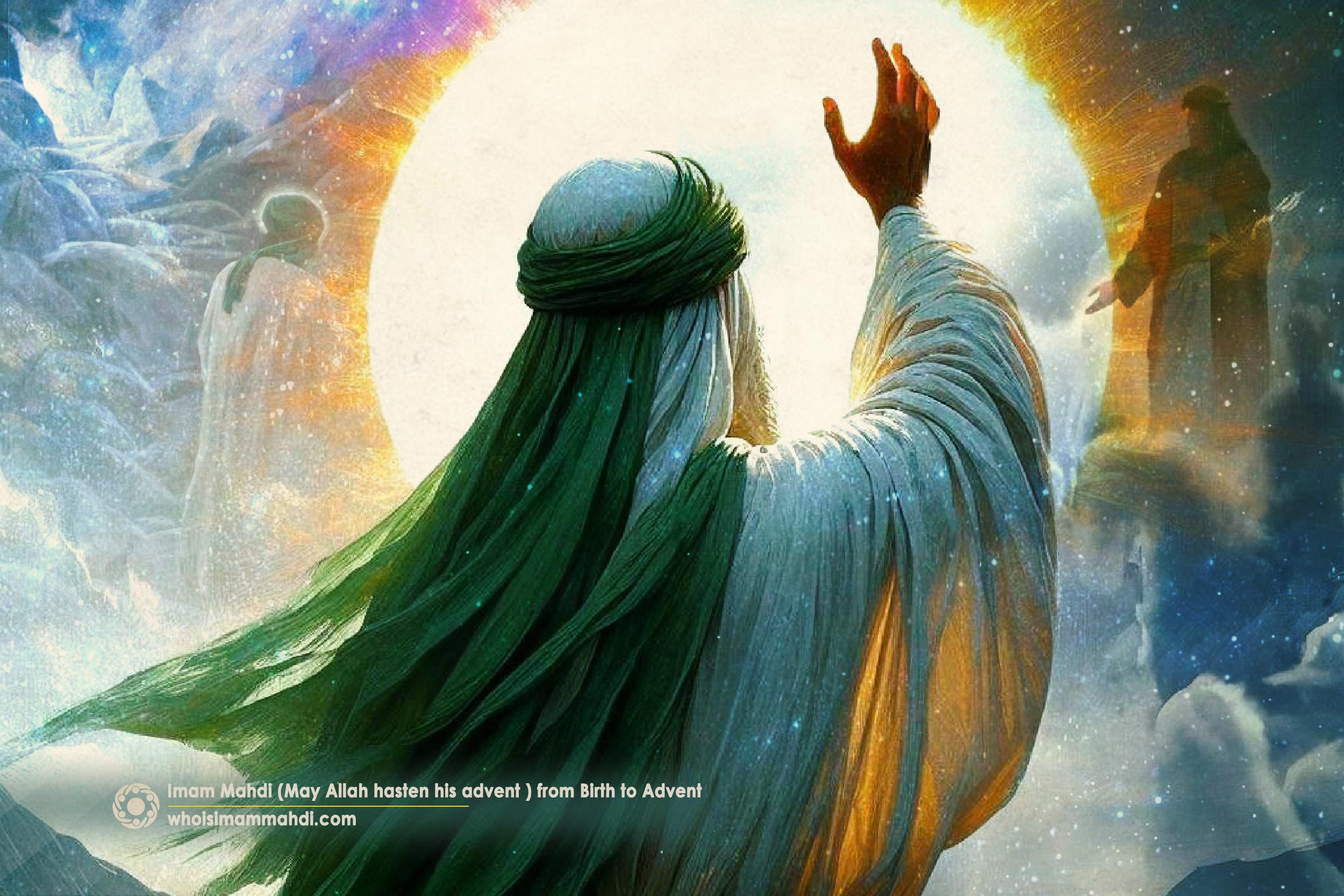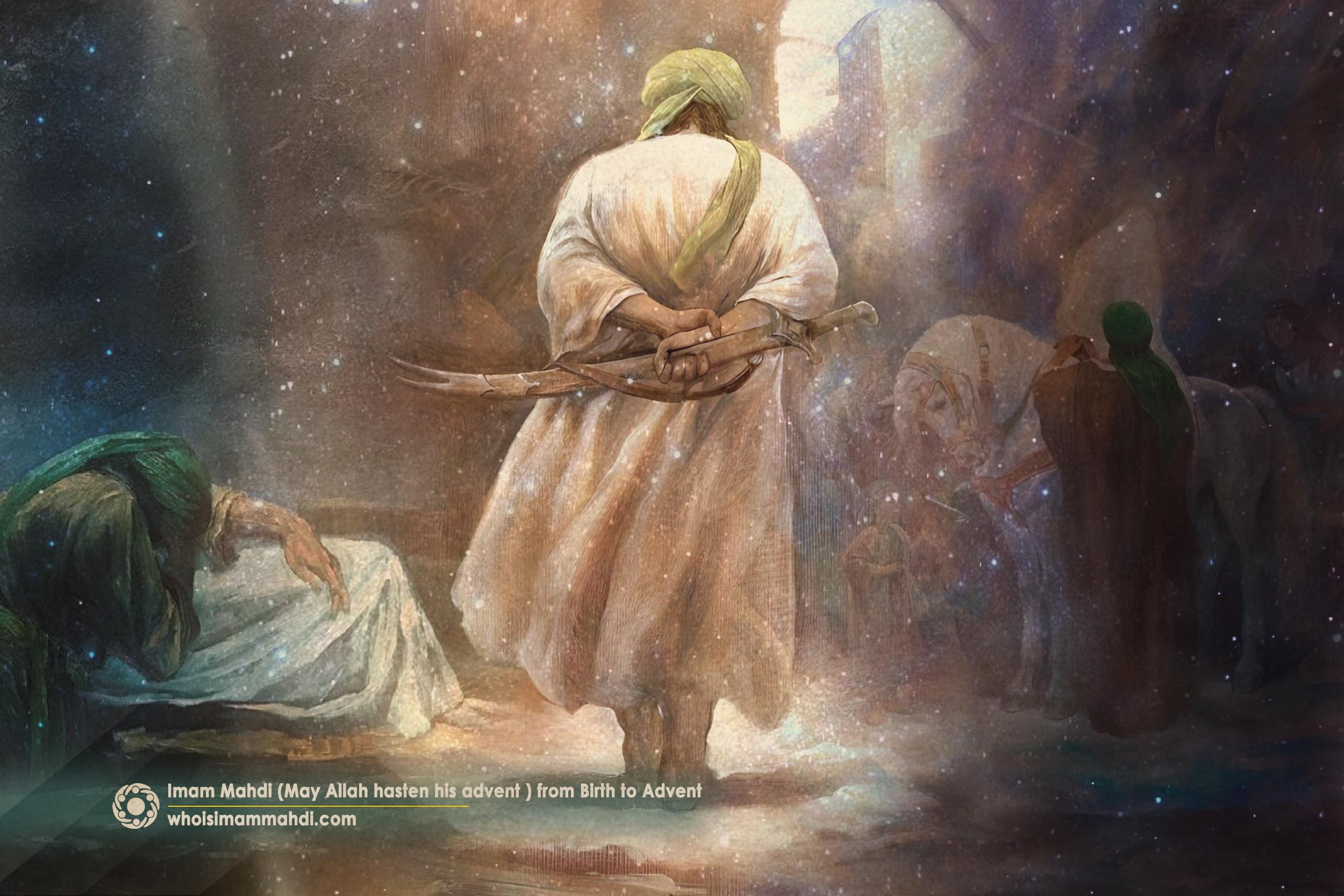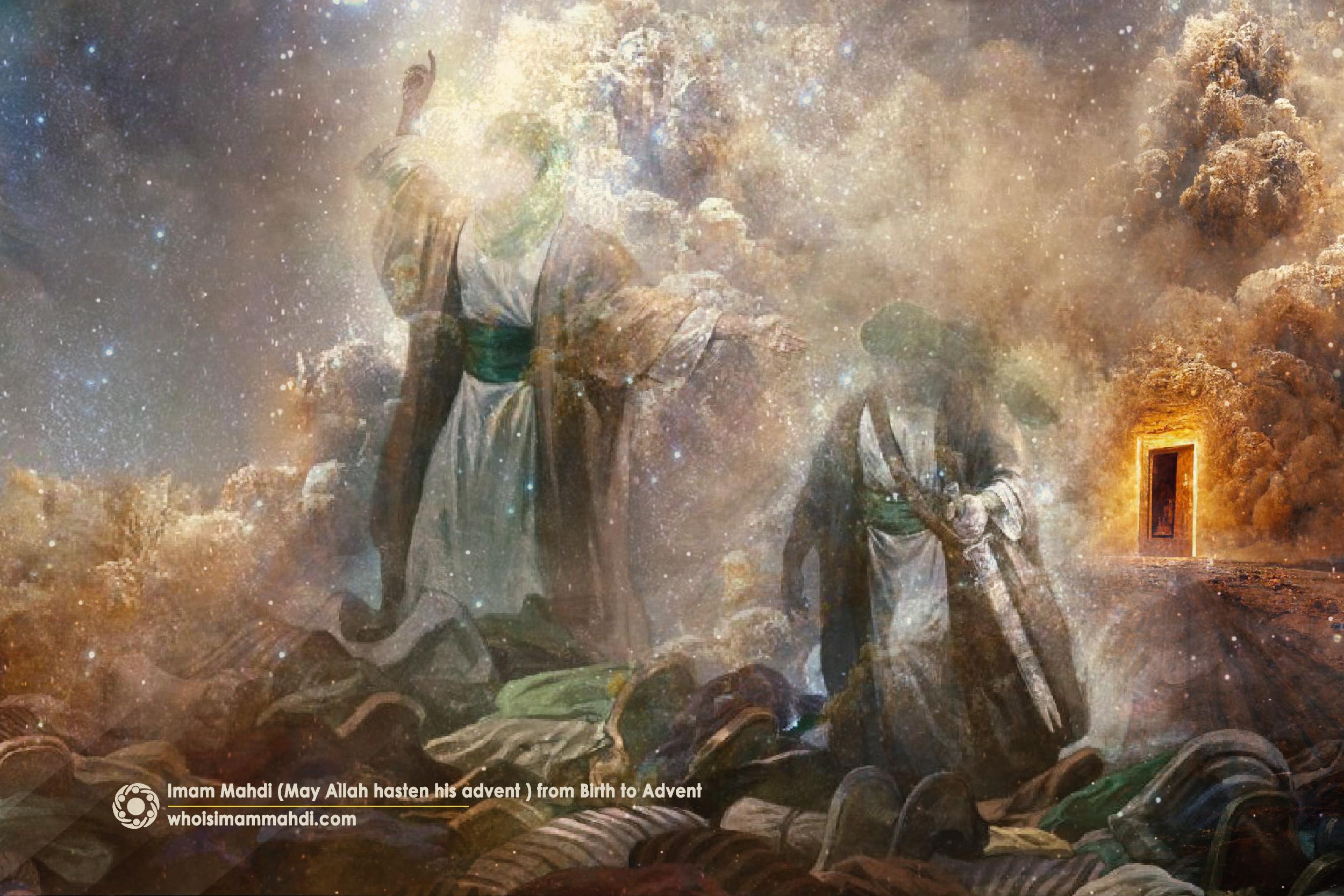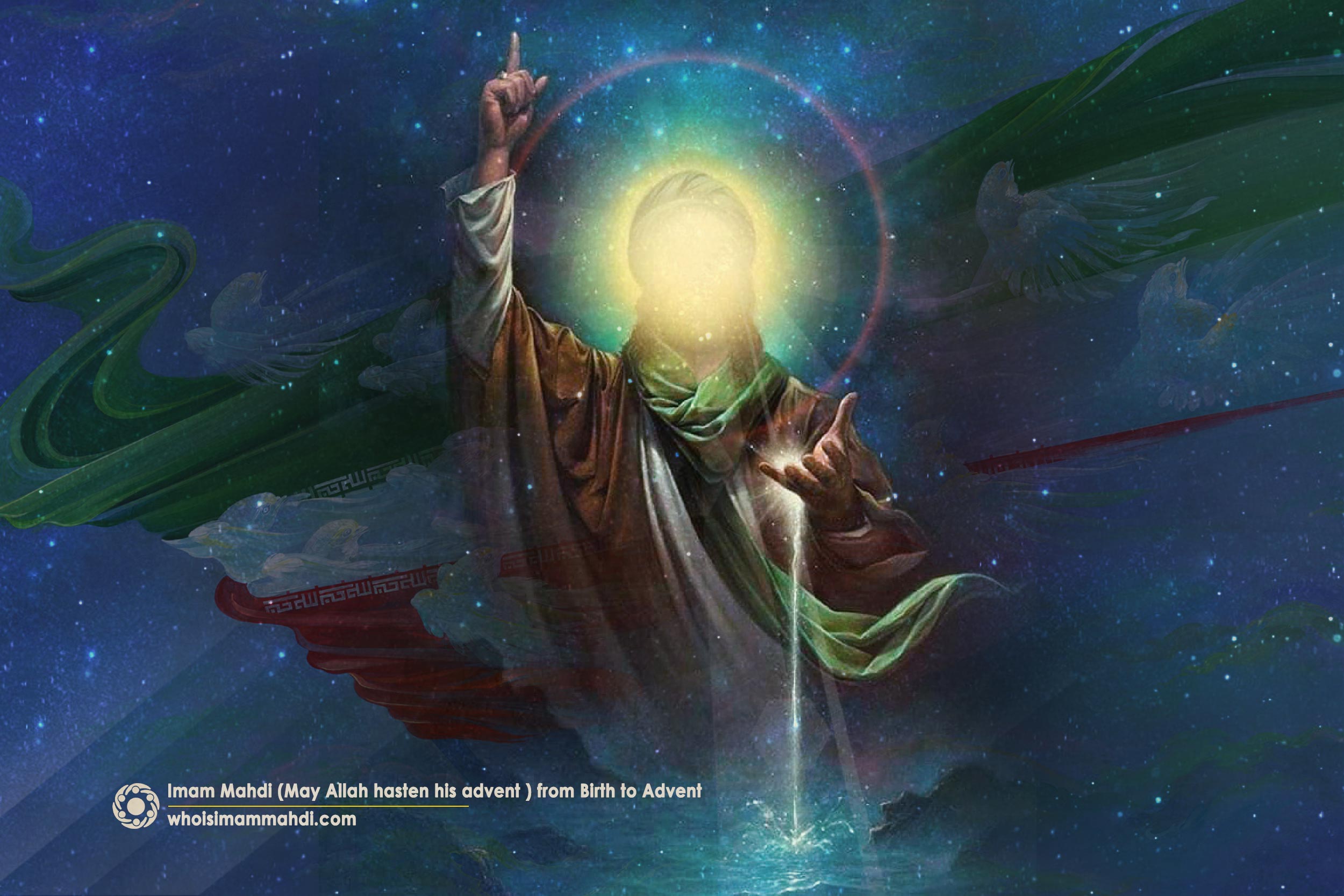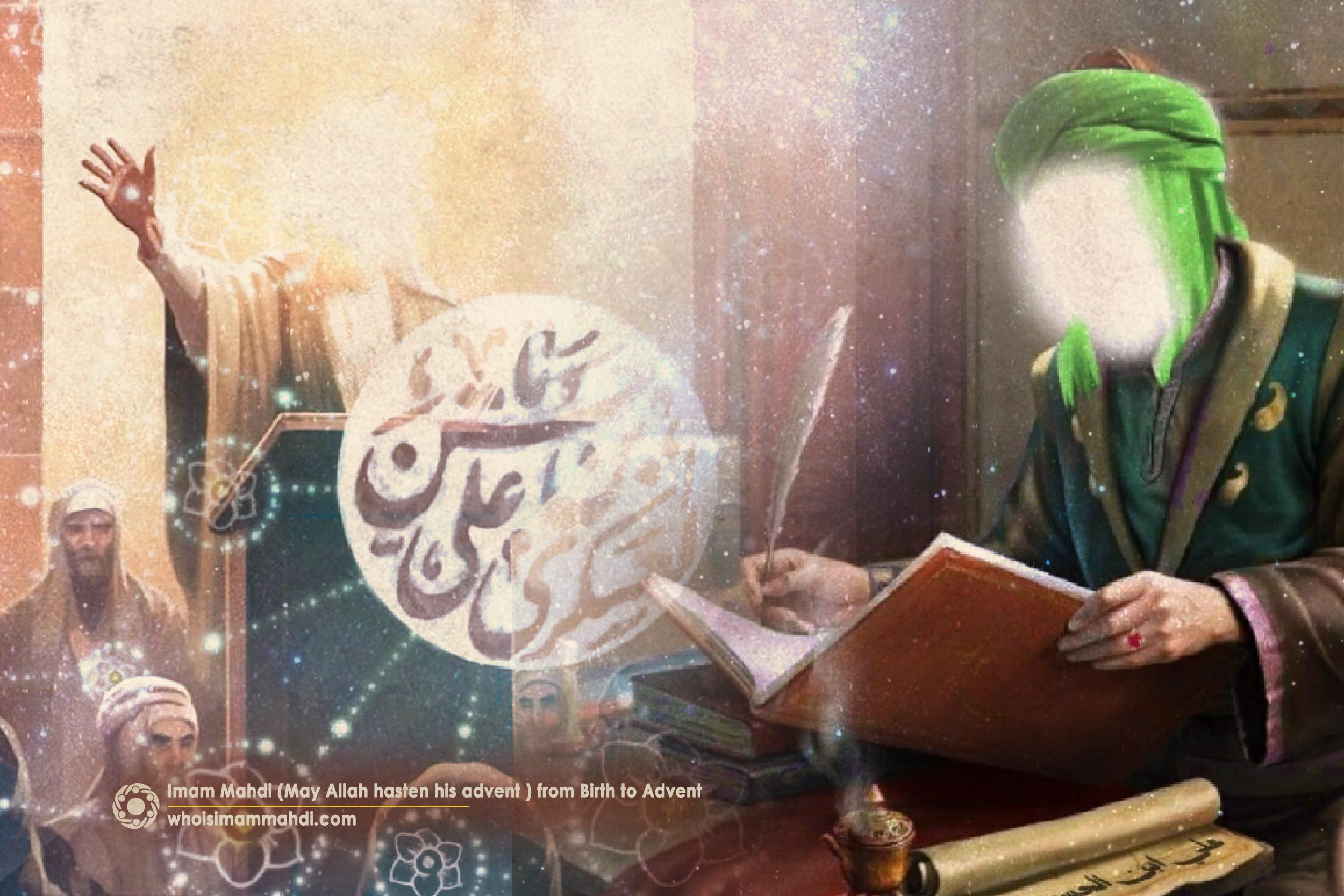The Peace Treaty of Imam Hasan (PBUH): Unfolding the Hypocrisy and True Nature of the Umayyads
Imam Hasan (PBUH) is the first son of Imam Ali and Lady Fatima Zahra (PBUT) and the eldest grandson of the Prophet of Allah (PBUH). He was born in Medina on the fifteenth of Ramadan in the third year of Hijri.
The first seven years of Imam Hasan’s (PBUH) life coincided with the lifetime of the Messenger of Allah, Prophet Muhammad (PBUH). He was the offspring of the blessed family, and some verses of Surah Al-Insan, the Verse of Mawaddah (Love),[1] and the Verse of Purification were revealed in their honor. Moreover, he is one of the People of the Cloak (Ashab al-Kisa), whom the Shiites, based on Quranic verses, consider infallible. Like other members of the Ahl al-Bayt,[2] Imam Hasan (PBUH) possessed outstanding virtues and characteristics. He walked to Mecca for Hajj twenty-five times and his being known as ‘Kareem Ahl al-Bayt’ (the Generous of the Prophet’s Household) is not without reason; he donated all his possessions twice in the way of Allah and gave away half of his belongings to the needy three times.
Before reaching the position of Imamate, Imam Hasan (PBUH) was always at the service of and obedient to the infallible expert of his time, the ‘Commander of the Faithful (Imam Ali). Loyal to Imam Ali (PBUH), he followed his commands, defending Uthman’s house during the tumultuous period leading up to the end of Uthman’s caliphate. Later, during Imam Ali’s (PBUH) own caliphate, he demonstrated his commitment by moving to Kufa alongside Imam Ali (PBUH). During Imam Ali’s (PBUH) caliphate, Imam Hasan (PBUH) was one of the commanders of Imam Ali’s (PBUH) army in the battles of Jamal and Siffin.
The third era of the Imamate began approximately nine months after Imam Hasan (PBUH) became the caliph, coinciding with the Peace Treaty of Imam Hasan (PBUH). After the martyrdom of Imam Ali (PBUH) on the 21st of Ramadan, 40 AH, Imam Hasan (PBUH) became the Imam, and more than forty thousand people pledged allegiance to him for the caliphate at the very beginning. Mu’awiya, who was not willing to pledge allegiance to Imam Hasan (PBUH), moved with an army from Sham (modern-day Syria) towards Iraq. Imam Hasan (PBUH) also sent an army under the command of Ubayd Allah ibn Abbas towards Mu’awiya, and he himself went to an area called Sabat with the remaining soldiers.
In the midst of Mu’awiya’s scheming to establish grounds for peace, Imam Hasan (PBUH) was wounded in an assassination attempt by one of the Kharijites and was taken to Mada’in for treatment. In this situation, some of the leaders of Kufa demonstrated their loyalty to Mu’awiya by writing him letters and promising to either hand over or kill Imam Hasan (PBUH). Mu’awiya, who during this period had used vows and rumors to cause the disintegration of Imam Hasan’s army, sent a peace proposal and the letters of the leaders of Kufa to the Imam, forcing him to accept peace. Although this peace seemingly benefited Mu’awiya and put Imam Hasan (PBUH) under pressure even from his closest companions,[3] it was cleverly designed by the Imam to ultimately reveal the corrupt and true nature of the Umayyads, as we will discuss later.
After agreeing on a ceasefire with Mu’awiya, Imam Hasan (PBUH) left Kufa and went to Medina.[4] However, the conspiracies of the Umayyads did not end at this point and continued until Imam Hasan (PBUH) was martyred. Mu’awiya, who did not adhere to any of the terms of the Peace Treaty, decided to take allegiance for his son, Yazid, contrary to the Treaty’s conditions. He allured Ja’da, the wife of Imam Hasan (PBUH), with one hundred thousand dirhams and asked her to poison and martyr the Imam. Thus, after ten years of leadership, Imam Hasan (PBUH) was martyred in the year 50 AH and was buried in the Baqi cemetery. The collection of narrations and hadiths reported from him has been compiled in a book named Musnad of Imam Hasan Mujtaba (PBUH).
The Peace Treaty of Imam Hasan: The Beginning of a New Era in Islamic History
Following the 25-year period during which Imam Ali (PBUH) patiently endured the usurpation of the caliphate, and his subsequent rule of approximately five years as the infallible leader of the people, we enter a new era of the Imamate. This period starts with the Peace Treaty of Imam Hasan (PBUH) in 41 AH and continues until the uprising of Ashura in 61 AH.
Imam Hasan and Imam Hussain (PBUT) had unparalleled characteristics and virtues, as they were the grandsons of Prophet Muhammad (PBUH) and were always highly esteemed by him. Also, with parents such as Lady Fatima Zahra (PBUH), the most virtuous woman in the world, and Imam Ali (PBUH), the Prophet’s appointed successor, their lineage and upbringing further elevated their esteemed position. However, due to the tyrannical rule and the actions of unjust leaders, they became oppressed while trying hard to revive the traditions of Prophet Muhammad (PBUH) and reclaim Islamic governance. Most of us know this period through the event of Ashura, but we lack substantial knowledge about Imam Hasan’s (PBUH) nine-year caliphate. As a matter of fact, the Peace Treaty of Imam Hasan (PBUH) laid the groundwork and set the stage for the uprising of Ashura and the revival of Islam once again. In other words, just as the uprising of Ashura played a significant role in reforming the community of Prophet Muhammad (PBUH) and revealing the true nature of unjust rule, the Peace Treaty of Imam Hasan (PBUH) and his actions during his nine-year leadership are (equally) important.
Imam Hasan (PBUH) inherited a government that was increasingly deviating from the standards of the leadership established by Imam Ali and the Prophet (PBUT). He faced a nation who had not appreciated the value of an infallible leader, but rather had also been often rebuked by Imam Ali (PBUH) for its negligence and laziness in following his commands. Those people had failed the test of supporting the infallible Imam and were subjected to the attacks, doubts, and rumors spread by the Umayyad family. In that situation, Imam Hasan (PBUH) wisely accepted a Peace Treaty with Mu’awiyah. By doing so, he saved the Islamic community from destruction and preserved those people who had been nurtured in the school of Islam.
The Historical Analysis of the Peace Treaty of Imam Hasan (PBUH)
The Peace Treaty of Imam Hasan (PBUH) was a robust and well-established agreement, negotiated with great wisdom. Following the end of the Battle of Siffin and the imposition of arbitration on Imam Ali (PBUH), he decided to put an end to the controversies of the Battle of Nahrawan and return to Sham (Syria) to fight against Mu’awiya. Consequently, he kept his soldiers in a camp in the region of Nukhayla, outside of Kufa, and returned to Kufa for a few days, during which he was martyred.[5] Thus, when Imam Hasan (PBUH) became the caliph, he faced a prepared army and a specific enemy, leaving no doubt about continuing the battle against Mu’awiya and executing the decisions of Imam Ali (PBUH).[6]
However, during the six months of the process of pledging allegiance and preparing the army to confront Mu’awiya, Imam Hasan (PBUH) encountered significant challenges, most notably the enemy’s propaganda. Mu’awiya sent some agents among Imam Hasan’s (PBUH) troops to sow doubt and suspicion, using money to bribe and tempt individuals. By promising positions and forming relationship with governors, he deceived the government officials and commanders of Imam Hasan’s (PBUH) army, and, in some cases, resorted to threats.[7] As a result, Imam Hasan (PBUH) found himself with an army without commander, and after six months, agreed to cease the war under certain conditions. Mu’awiya, whose sole aim was to seize power, accepted all Imam Hasan’s (PBUH) conditions.
As part of the detailed Peace Treaty, Imam Hasan (PBUH) specifically made it a condition that Mu’awiya was not allowed to call himself “Commander of the Faithful.” This title is reserved for the rightful successor to the Prophet (PBUH), that is, Imam Ali (PBUH). He clearly stated that Mu’awiya had no right to harm the lives of Shia people; he had no right to treat the government as hereditary and appoint a successor for himself. After Mu’awiya, the government belongs to Imam Hasan, and in his absence, to Imam Hussain (PBUT). [8] There were other conditions that will be addressed later.
In fact, the Peace Treaty of Imam Hasan (PBUH) was a ceasefire between him and Mu’awiya, under which Mu’awiya was disgraced in history. Through this, despite a shortage of loyal and true supporters, Imam Hasan (PBUH) remained Mu’awiya’s most powerful opponent. He laid the foundations of the secret Shia organization, as we will discuss later; he created the necessary conditions to overthrow the corrupt Umayyad Caliphate, and he preserved the connection of future generations with the school of Islam.[9]
Provisions of the Peace Treaty of Imam Hasan (PBUH) with Mu’awiya
Shaykh Mufid referred to the Peace Treaty of Imam Hasan (PBUH) with the term temporary cease fire,[10] and there are significant differences regarding the Peace Treaty in various historical sources. The most reliable report of the Peace Treaty of Hasan (PBUH) with Mu’awiya comes from the book Al-Futuh written by Ibn A’tham al-Kufi. According to this report, Imam Hasan (PBUH) sent Abdullah ibn al-Harith ibn Nawfal to negotiate peace with Mu’awiyah, including this message that Ali’s followers should be safe and unharmed. Abdullah himself also added some conditions to this request. Mu’awiyah agreed to them all, signed a blank document, and gave it to Abdullah ibn al-Harith ibn Nawfal for the Imam to write any conditions he wished. Imam Hasan (PBUH) disagreed with the conditions proposed by Abdullah and wrote other non-financial conditions in the peace document. These conditions were as follows:
- Mu’awiyah must stop cursing and vilifying the Commander of the Faithful (Imam Ali) during the qunut[11] of his prayers.
- Mu’awiyah must guarantee the safety of Ali’s followers and not aim any ill intentions at them.
- Mu’awiyah must ensure the rights of Ali’s followers.
- Mu’awiyah must not appoint a successor and must leave the selection of the caliph to a council of Muslims. From this very condition, it can be inferred that the Peace Treaty of Imam Hasan with Mu’awiyah was not a permanent one but a temporary cease fire during Mu’awiyah’s lifetime.
- All people, wherever they are, must be safe.
- The followers and companions of Ali (PBUH) must be secure in their lives, property, and families.
- Mu’awiyah must not plot against Hasan, his brother Hussain, or any other member of the Prophet’s family, nor must he harm them.
- Mu’awiyah must adhere to the Book of Allah, the conducts (Sunnah) of the Prophet, and the conduct of Rashidun Caliphs.[12]
- Mu’awiyah is not allowed to appoint anyone as his successor; the selection of the caliph must be made by a council of Muslims.
Thus, in this Peace Treaty, Imam Hasan warned Mu’awiyah against appointing a successor and establishing a hereditary caliphate, while ensuring the safety of Imam Ali’s followers and the people of Iraq. The Peace Treaty of Imam Hasan (PBUH) was agreed on and signed in the region of Maskin in the presence of a large group of people from Sham (Syria).
The Shift in the Struggles of the Infallible Imams (PBUT) after the Peace Treaty of Imam Hasan (PBUH)
After the Peace Treaty of Imam Hasan (PBUH) in the year 41 AH, he continued his fight against the Umayyad Caliphate in a different manner, changing the fight between truth and falsehood from overt combat to covert struggle.[13] Mu’awiya not only exercised political power but also employed intellectual and cultural power to defame prominent figures of Islam and prevent people from approaching them. Therefore, Imam Hasan’s (PBUH) struggle was not merely against Mu’awiya as an individual but against an intellectual and cultural movement, which, when necessary, also included military aspects. This struggle was essentially designed to counteract Mu’awiya’s way of governing and hidden polytheism in general.
During this period, Imam Hasan (PBUH) put the criterion of his movement in line with the primary goal of all prophets and divine leaders, which was the effort to establish the true government of Islam. To revive this government, he secretly established Shia organizations and trained and preserved the righteous individuals and revolutionary soldiers. These soldiers exposed the hypocrisy of the Umayyads, created the necessary intellectual groundwork for a potential uprising of the righteous in the society, and supported Imam Hussain (PBUH) in advancing his objectives, and brought his mission to fruition. In reality, the promotional activities of Imam Hasan and Imam Hussain (PBUT) during this period were carried out in two ways:
- 1. Shining a light on the authentic teachings of Islam, exposing the deviations made by the Umayyad Caliphate, and explaining the Islamic ideology and thought by the two Imams themselves
- The protests and vigorous actions taken by individuals like Hujr, Rashid, and Amr ibn Hamiq, which not only exposed the true nature of the Umayyad Dynasty but also prepared the public mindset for accepting movements of righteous striving[14]
Thus, by shifting from overt to covert struggle, Imam Hasan (PBUH) was willing to sacrifice his reputation and popularity even among his closest companions to the true benefit of Islam. To preserve Islam[15] and ensure that individuals in society ultimately benefit from the infallible expert, he came under attack from both friends and foes.
The Reason for Preferring Peace Over War
Many of us may wonder why Imam Hasan (PBUH) chose peace and a cease fire over war. Why did Imam Hussain (PBUH) rise up, while Imam Hasan (PBUH) withdrew from conflict? What was the reason for accepting unjust rule during Imam Hasan’s time and opposing it during Imam Hussain’s time?
To answer these questions, we need to examine the different circumstances and conditions faced by Imam Hasan and Imam Hussain (PBUT) in their times.
– Considering the events at the beginning of Imam Hasan’s caliphate and the disunity in his army, Imam Hasan (PBUH) was convinced that fighting Mu’awiyah would lead to defeat. Such an action would not benefit Islam; rather, it would lead to the complete destruction of Islam and the loss of all the loyal companions of Imam Ali (PBUH), who had been nurtured over the years.[16]
– Any significant military action requires intellectual, cultural, and social groundwork. Without prior preparation and organization, even if Imam Hasan (PBUH) had been killed in battle, it would not have had the same historic and revitalizing impact as the uprising of Ashura. It would have been merely seen as the murder of a caliph by one of his opponents. This means that Imam Hasan (PBUH) and his companions would have been martyred without any organization or group to reveal the truth about the Umayyads after their martyrdom. Consequently, Mu’awiyah, as the leader of the tyrannical government, would have altered and distorted Islam without any opposition in the absence of the infallible expert.[17]
In contrast, the situation during Imam Hussain’s time was different. For twenty years, Imam Hasan and Imam Hussain (PBUT) worked on making a covert Shia organization in Kufa, Medina, Yemen, and even Khorasan. They laid the groundwork for Imam Hussain’s uprising, which was meant to deliver a final blow to the Umayyad Caliphate. In other words, the third era of the Imamate was a period of preparing the society to accept Imam Hussain’s uprising and the final blow by the infallible expert to the tyrannical Umayyad rule. During this time, Imam Hasan and Imam Hussain (PBUT) worked together for ten years, and after Imam Hasan’s martyrdom, Imam Hussain (PBUH) continued these efforts alone to prepare the society for this matter.[18]
- The faction that stood against Imam Hasan (PBUH) represented the forces of hypocrisy. Imam Hasan (PBUH) faced Mu’awiya, who presented himself as a Muslim and a scribe of the Quran, a companion who had seen the Prophet (PBUH), but in reality, he was determined to destroy Islam. He was a person with the habit of living in palace, who saw Islam as an obstacle to his indulgences and worldly desires, and he took steps to alter the Quran and distort Islam to achieve his goals. In such circumstances, the Peace Treaty of Imam Hasan (PBUH) provided a platform to expose the hypocrisy of the Umayyads, unveil the true face of Mu’awiya, and show his disregard for the terms of the Peace Treaty. Imam Hasan (PBUH) used this opportunity to elucidate the true Islam.[19] As a result, Kufa became well acquainted with Mu’awiya’s true character and turned into a center for revolts against the Umayyad Dynasty. However, with Mu’awiya’s death in 60 AH, the situation changed. Imam Hussain (PBUH), who had followed Imam Hasan’s (PBUH) approach until Mu’awiya’s death, faced a new situation. The opposing front to Imam Hussain (PBUH), which was Yazid, openly engaged in corruption and opposition to the principles and values of Islam, paving the way for the uprising of Imam Hussain (PBUH).[20]
- Imam Hussain (PBUH) faced a person like Yazid who was so corrupted, voluptuary, and reckless that it was impossible to make peace or coexist with his caliphate. Therefore, if the uprising of Imam Hussain (PBUH), which revived Islam and exposed the corrupt nature of the Umayyads, had occurred during Imam Hasan’s time, it would have completely destroyed Islam. The infallible Imam, who embodies the attributes of beneficence and mercy, acts in a way that ultimately benefits all humanity. Thus, Imam Hasan (PBUH) accepted the ceasefire to prepare for the confrontation with Mu’awiya’s rule and to train powerful individuals. By providing a stage for Mu’awiya’s presence, he prepared the groundwork to expose the true face of the Umayyad Dynasty and engaged in a covert and organized struggle to reclaim the Islamic governance.
The Uprising of Imam Hussain (PBUH): The Result of the Peace Treaty of Imam Hasan (PBUH)
The third era of the Imamate reached its peak in the year 61 AH, assisted by the Peace Treaty of Imam Hasan (PBUH) and the preparation of society for an uprising against the tyrannical government. Hussain (PBUH), who had spent a significant part of his Imamate strengthening the secret Shiite organization, saw the rise of Yazid as an opportunity for overt confrontation. Acting as a promoter of virtue and preventer of vice, he rose against Yazid’s oppressive and corrupt regime to revive the traditions of Prophet Muhammad and Imam Ali (PBUT) and to reform the Ummah of his ancestor.[21]
Under pressure from Yazid to pledge allegiance, Imam Hussain (PBUH) made a historic statement: “Someone like me will never pledge allegiance to someone like Yazid,”[22] thereby drawing a clear line between the rule of truth and the rule of tyranny. With the conditions ripe, he went into over battle with the Umayyads. Although this battle ultimately led to his martyrdom and the captivity of his family, it eternally recorded the cry of hatred of the infallible Imam against the tyrannical government in history and breathed a new life into the Islam approved of by Prophet Muhammad and Imam Ali (PBUT).
Thus, the third era of the Imamate, which began with the Peace Treaty of Imam Hasan (PBUH) in 41 AH and concluded with the uprising of the Master of Martyrs (Imam Hussain) in 61 AH, played its role in preserving and maintaining Islam through the sacrifices of Hasan and Hussain (PBUT). While they did not succeed in establishing an Islamic government themselves, their deep insight exposed the plots and true nature of the tyrannical government and ensured the Muslim community continued to benefit from the presence of an infallible expert.
[1]. Quran, 42:23; for more information see Ridwanah Siddiq-e Alawi, A Probe into the Purport and Application of the Verse of Love. Ahlul Bayt World Assembly.
[2]. Household of Prophet Muhammad
[3]. Sayyid Husayn Muhammad Ja’fari, The Origins and Early Development of Shia Islam. London & Beirut: Longman Group & Librairie Du Liban, 1979, Ch. 6.
[4]. For more information on Imam Hasan’s war against Mu’awiyah, see Qurrat ul Ain Abidiy, Imam Hasan and Caliphate. Qom: Ansariyan Publications.
[5]. Muhammad Muhammadi Rayshahri, Encyclopedia of Imam Ali, trans. Zaid Alsalami & Safiyullah Khan, vol. 2, Ch. 1, p 2.
[6]. Shaykh Radi Aal-Yasin, Sulh al-Hasan, the peace treaty of al-Hasan, trans. Jasim al-Rasheed, Ch. 8, pp. 64-66;
Baqir Sharif al-Qurashi, The Life of Imam Husayn (‘a) Research and Analysis, trans. Sayyid Athar Husayn S.H. Rizvi. Qom: Ansariyan Publications, 2000, p. 357.
[7]. Aal-Yasin, Sulh al-Hasan: The Peace Treaty of al-Hasan, p 55-56, 113
[9]. Ali Khamenei, A 250-Year-Old Person, trans. The Ahl al-Bayt (as) World Assembly, pp. 146-147.
[10]. Shaykh Mufid, Kitab al-Irshad, vol. 2, p. 31.
[11]. Qunut is a moment in Islamic prayer for Muslims to humbly and directly ask Allah for help, guidance, or forgiveness while standing.
[12]. The first four caliphs of the Islamic community after the death of Prophet Muhammad
[13]. Baqir Sharif al-Qurashi, The Life of Imam Al-Hasan Al-Mujtaba, trans. Jasim al-Rasheed. Qom: Ansariyan Publications, p. 462.
Rasul Ja’fariyan, History of The Caliphs from the Death of the Messenger (S), to the Decline of the Umayyad Dynasty. Qom: Ansariyan Publications, p. 325.
[15]. Ali Khamenei, A 250-Year-Old Person, trans, pp. 127-128.
[16]. al-Qurashi, The Life of Imam Husayn (‘a) Research and Analysis, p. 359.
[17]. Sayyid Sa’eed Akhtar Rizvi, Understanding Karbala. Qom: Ansariyan Publications, 2006, p. 14.
[18]. Shaykh Mahdi Pishvai, The Lives of the Twelve: A Look at the Social and Political Lives of the Twelve Infallible Imams, trans. Sayyid Ali Musawi, vol. 1, p. 101.
[19]. Yusuf Fadhl, Imam Husayn’s Revolution: An Analytical Review. World Organization for Islamic Services, p. 15;
al-Qurashi, The Life of Imam Husayn (‘a) Research and Analysis, p. 359.
[20]. Ali Khamenei, A 250-Year-Old Person, pp.158-159.
[21]. Majlisi, Bihar Al-Anwar, vol. 44, Ch. 37, p. 397.
[22]. Sayyed ibn Tawus, Lohoof (Sighs of Sorrow), trans. Muhammad Husain Shahri. Ghaemiyeh center of computerized researches, p. 32.






